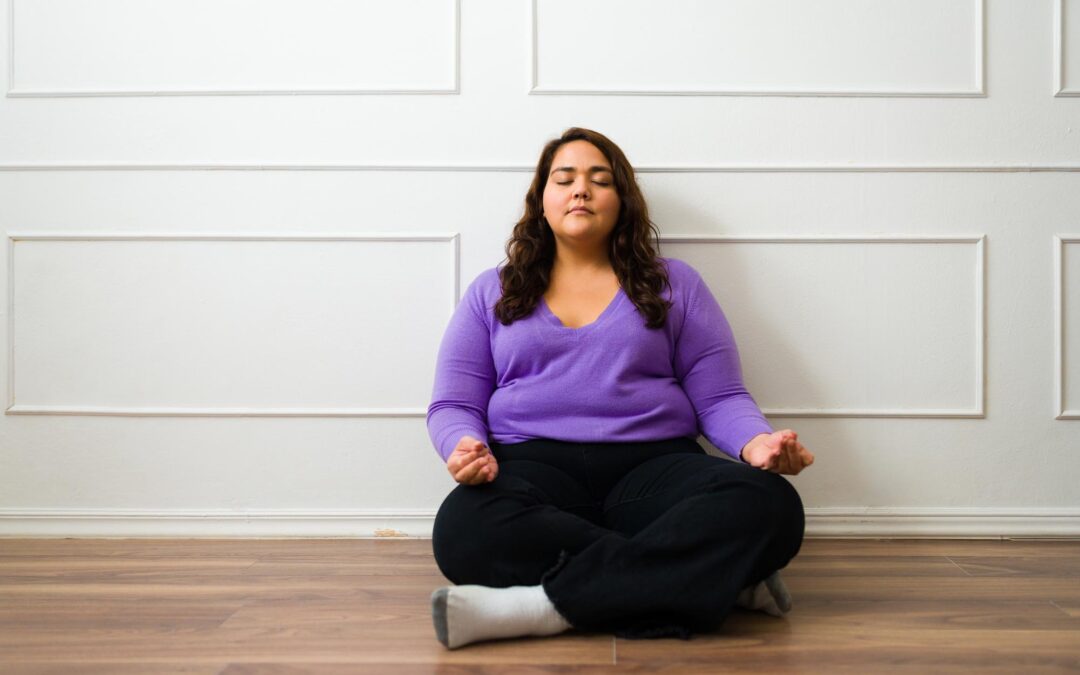Understanding Cognitive Behavioral Therapy (CBT) for Anxiety
Cognitive Behavioral Therapy (CBT) is an evidence-based therapy widely used to treat various mental health conditions, including anxiety disorders. This psychotherapeutic approach focuses on identifying and altering negative thought patterns and behaviors, offering a practical solution for individuals seeking to manage their anxiety effectively.
Why Addressing Anxiety Disorders is Important
Addressing anxiety disorders is crucial due to their prevalence and impact on daily life. Anxiety can manifest in different forms, such as generalized anxiety disorder, panic disorder, or social anxiety, each affecting mental well-being significantly.
By tackling these conditions head-on with therapies like CBT, individuals can regain control over their lives and reduce debilitating symptoms.
What This Article Covers
This article delves into the intricacies of CBT for anxiety, exploring its principles and structure, techniques employed, and the benefits it offers. By understanding what CBT entails and how it functions as a treatment method, you are better equipped to make informed decisions regarding your mental health journey.
The Principles and Structure of CBT
Cognitive Behavioral Therapy (CBT) is based on the idea that our thoughts, feelings, and behaviors are all connected. By focusing on these connections, CBT aims to change negative thought patterns that contribute to anxiety, leading to healthier emotional responses and actions.
Core Principles of CBT:
- Thoughts Influence Emotions and Behaviors: Negative or irrational thoughts can lead to distressing emotions and unhelpful behaviors. Identifying these thoughts allows individuals to challenge and change them.
- Behavioral Patterns Reinforce Thoughts: Engaging in certain behaviors can reinforce negative thinking. By altering behavior through strategic interventions, CBT helps break this cycle.
- Active Collaboration: The therapist and client work together actively, setting goals and developing strategies for change.
CBT Treatment Process:
- Assessment: Understanding the individual’s specific challenges and setting therapeutic goals.
- Identifying Thought Patterns: Using techniques like thought records to identify negative automatic thoughts.
- Challenging Cognitive Distortions: Techniques such as cognitive restructuring help challenge and alter distorted thinking.
- Behavioral Interventions: Exposure therapy may be used to confront feared situations gradually.
- Skill Development: Learning coping mechanisms for managing anxiety effectively.
- Review and Relapse Prevention: Consolidating gains and planning for future challenges.
Each session is structured and goal-oriented, often involving homework assignments to practice skills outside of therapy sessions. This structured approach makes CBT a practical choice for treating anxiety disorders effectively.
Key Components and Techniques Used in CBT for Anxiety Disorders
Cognitive Behavioral Therapy (CBT) is renowned for its structured approach to addressing anxiety disorders by focusing on the interplay between thoughts, feelings, and behaviors. In the context of anxiety, identifying and challenging negative thought patterns is a critical first step.
Identifying and Challenging Negative Thought Patterns
Negative thoughts often contribute to anxiety by creating distorted perceptions of reality. CBT practitioners guide individuals in recognizing these unhelpful thinking patterns. Common negative thoughts include:
- Catastrophizing: Imagining the worst-case scenario.
- Overgeneralization: Making broad assumptions based on a single event.
- All-or-Nothing Thinking: Viewing situations in black-and-white terms without considering middle ground.
Once identified, these thoughts are challenged through techniques such as cognitive restructuring. This involves questioning the validity of negative beliefs and replacing them with balanced, realistic alternatives. For example, instead of thinking, “I will fail at everything,” CBT encourages reframing to, “I have succeeded before and can try again.”
Developing Coping Mechanisms
CBT provides tools to develop effective coping strategies. Two prominent techniques used are:
- Exposure Therapy: This technique involves gradual exposure to anxiety-provoking stimuli or situations in a controlled manner. By facing fears instead of avoiding them, individuals learn that anxiety diminishes over time and situations are not as threatening as perceived.
- Example: Someone with social anxiety might start by imagining speaking in public, then progress to speaking in front of a small group, gradually increasing the audience size.
- Cognitive Restructuring: As mentioned earlier, this technique focuses on altering negative thought patterns. It is instrumental in reducing anxiety by promoting healthier cognitive processes.
- Example: If someone believes they are always being judged negatively by others, cognitive restructuring helps challenge this belief using evidence-based reasoning.
Self-Help Techniques
In addition to therapist-led interventions, self-help techniques support the CBT process. These can reinforce therapy sessions and promote independence in managing anxiety:
- Journaling: Writing down thoughts and feelings can help track progress and identify triggers.
- Mindfulness Practices: Techniques such as meditation help ground individuals in the present moment, reducing anxious rumination.
- Relaxation Exercises: Breathing exercises or progressive muscle relaxation reduce physiological symptoms of anxiety.
By implementing these strategies, CBT empowers individuals with practical tools for managing anxiety effectively. The integration of professional guidance with self-help practices ensures a comprehensive approach to overcoming anxiety’s challenges.
Moreover, it’s important to note that self-help techniques can be particularly beneficial when used alongside professional therapy.
Effectiveness and Benefits of Using CBT to Treat Anxiety Disorders
Cognitive Behavioral Therapy (CBT) is recognized for its effectiveness in treating a variety of anxiety disorders. These include:
- Generalized Anxiety Disorder (GAD): Characterized by persistent and excessive worry about everyday aspects of life, GAD can significantly impact daily functioning.
- Panic Disorder: Involves sudden and repeated episodes of intense fear accompanied by physical symptoms such as heart palpitations and dizziness.
- Social Anxiety Disorder: Marked by an overwhelming anxiety and self-consciousness in everyday social situations.
Research highlights the effectiveness of CBT for anxiety disorders. A meta-analysis, which reviewed numerous studies on this therapy, found that CBT consistently helps reduce symptoms across various types of anxiety disorders. This comprehensive analysis underscores why CBT is often recommended as a first-line treatment.
Benefits of CBT include:
- Structured Approach: CBT offers a systematic method for identifying and addressing negative thought patterns. This structured framework provides a clear roadmap for individuals to follow during their therapy sessions.
- Evidence-Based Results: Numerous studies have validated the positive treatment outcomes for anxiety disorders achieved through CBT. The evidence-based nature of this therapy ensures that it remains grounded in scientific research, providing reassurance to those seeking effective treatment.
- Skill Development: Beyond symptom relief, CBT equips individuals with practical skills they can use long-term. These skills help manage anxiety symptoms and prevent future occurrences, making it a sustainable approach to mental health care.
The advantages provided by CBT emphasize its role as a key player in managing anxiety disorders effectively. By offering both immediate relief and long-term coping mechanisms, CBT empowers individuals to take control of their mental well-being with confidence.
The Practicalities: Treatment Structure, Duration, and Finding a Qualified CBT Therapist
Understanding the structure and duration of CBT therapy sessions is crucial for anyone considering this treatment. Typically, you might expect to engage in 6 to 20 sessions. The exact number can vary based on individual needs and the severity of anxiety symptoms.
Session Length in CBT Therapy Sessions:
Each session lasts between 30 to 60 minutes. This duration allows for an in-depth exploration of thoughts, feelings, and behaviors, fostering a comprehensive approach to anxiety management.
Formats Available:
- Individual Therapy: Provides personalized attention and tailored strategies.
- Group Sessions: Offers peer support and shared experiences, often beneficial for those who find solace in knowing they are not alone.
- Online Therapy: A flexible option that caters to individuals with time constraints or those preferring remote interactions.
Finding a qualified CBT therapist is vital to ensure effective treatment outcomes. Seek professionals with credentials in psychology or counseling who have specialized training in cognitive behavioral therapy. Verification through professional directories or recommendations from healthcare providers can guide you toward experienced therapists adept at addressing anxiety disorders.
Advantages and Disadvantages of Using CBT for Anxiety Management
Advantages of CBT for Anxiety Management
- Structured Approach: Cognitive Behavioral Therapy (CBT) provides a highly structured framework, making it easier to track progress and set clear goals. This structure can be particularly beneficial for individuals who thrive on routine and predictability.
- Evidence-Based Results: Numerous studies and meta-analyses have demonstrated CBT’s effectiveness in reducing anxiety symptoms. Its widespread success across various anxiety disorders makes it a trusted option for many healthcare professionals.
- Skill Development: CBT equips individuals with practical skills that can be applied beyond therapy sessions. Techniques such as cognitive restructuring and exposure therapy foster resilience and empower individuals to manage anxiety proactively.
Disadvantages of Using CBT for Treating Anxiety
- Potential Unsuitability: While effective for many, CBT might not suit everyone. Individuals with complex mental health needs or those requiring more intensive support may find its structured nature limiting.
- Time-Intensive Commitment: The process demands regular sessions, typically spanning several weeks or months. This commitment may not align with everyone’s schedule or immediate needs.
- Emotional Challenges: Engaging with one’s thoughts and emotions during CBT can be challenging for some individuals, potentially leading to discomfort before improvement is noticed.
Balancing these aspects is crucial when considering CBT as an option for anxiety management.
Exploring Self-Help Resources That Complement Traditional Therapy Methods
Self-help resources can serve as valuable supplements to traditional therapy methods, especially for individuals working through Cognitive Behavioral Therapy (CBT) for anxiety. These resources provide additional support and guidance outside regular therapy sessions, allowing you to deepen your understanding and practice of CBT techniques.
Recommended Self-Help Books on Anxiety Management
For those seeking to enhance their journey with CBT, there are several highly regarded self-help books that offer practical advice and exercises:
- “Feeling Good: The New Mood Therapy” by David D. Burns
- This book introduces readers to cognitive restructuring techniques central to CBT, helping them identify and challenge negative thought patterns.
- “When Panic Attacks: The New, Drug-Free Anxiety Therapy That Can Change Your Life” by David D. Burns
- Focusing on panic attacks and anxiety disorders, this resource provides a comprehensive approach using CBT strategies.
- “The Anxiety and Phobia Workbook” by Edmund J. Bourne
- A practical guide offering a range of strategies including relaxation techniques, lifestyle change recommendations, and exposure therapy exercises.
- “Mind Over Mood: Change How You Feel by Changing the Way You Think” by Dennis Greenberger and Christine A. Padesky
- This workbook aids in identifying unhelpful thoughts and offers worksheets for practicing cognitive-behavioral skills.
Exploring these resources can empower you to take an active role in managing anxiety while complementing the structured approach provided by professional CBT therapy.
Conclusion: Taking Control of Your Mental Health with Effective Therapies like CBT
Understanding the role of Cognitive Behavioral Therapy in treating anxiety disorders is a crucial step toward regaining control over your mental health. CBT for anxiety offers a structured and evidence-based approach that empowers individuals to identify and challenge negative thoughts, develop coping strategies, and ultimately manage anxiety symptoms more effectively.
Seeking help from qualified professionals is crucial. Whether you opt for individual therapy, group sessions, or online therapy formats, working alongside an experienced therapist can significantly enhance your journey toward mental well-being. Embracing therapies like CBT not only addresses current issues but also equips you with tools to handle future challenges.
Taking control of your mental health involves proactive steps and a willingness to explore different therapeutic methods. This journey can be transformative, leading to improved quality of life and greater resilience against stressors. Engaging with self-help resources further complements traditional therapy, providing additional support and fostering continuous personal growth.
Encouragement to pursue effective therapies like CBT stems from their proven track record in managing anxiety disorders. The path may require effort and commitment, yet the potential benefits make it a worthwhile endeavor. Prioritize your mental health today by exploring effective therapies such as those offered at the Advanced Therapy Center, which provides comprehensive outpatient treatment and psychiatric day treatment for various mental health conditions.
If you’re interested in learning more about the specific mental health conditions treated at Advanced Therapy Center, or if you need additional mental health resources, don’t hesitate to reach out. You can easily contact the Advanced Therapy Center for personalized care that can help you manage and overcome your mental health challenges, leading to a healthier and more fulfilling life.





